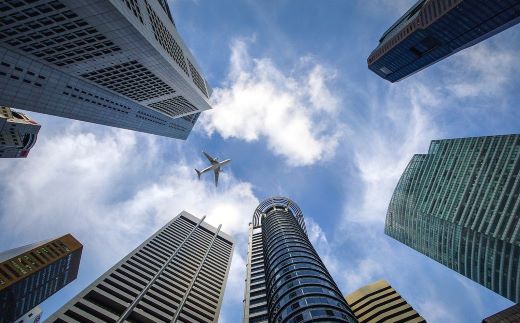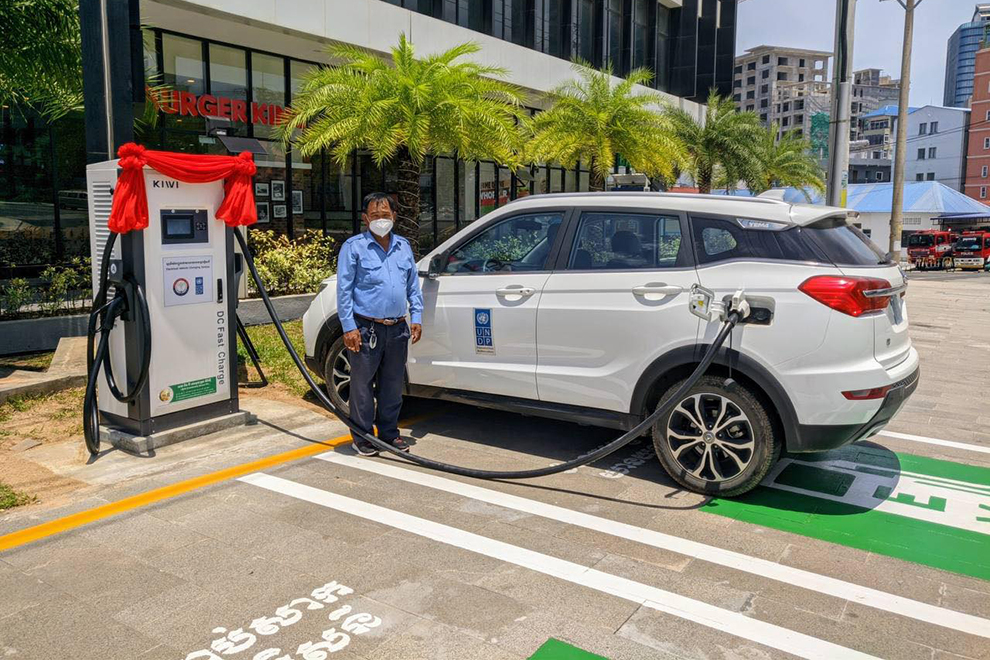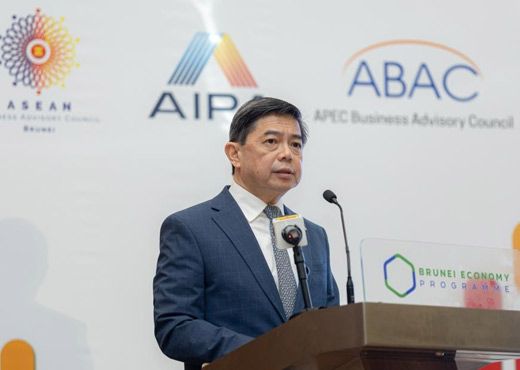Thailand's Eastern Economic Corridor (EEC) is gearing up for a new wave of foreign direct investment (FDI) with the launch of a comprehensive incentive package aimed at unlocking a treasure trove of benefits for investors seeking a strategic location in Southeast Asia with exceptional infrastructure and a commitment to innovation.
The move comes after applications for investment promotion surged to a five-year high of 848.3 billion baht last year, up 43% from the previous year, according to the Board of Investment (BOI).
The EEC, Thailand's prime industrial area comprising Chonburi, Rayong, and Chachoengsao provinces, again led the ranking with 460.5 billion baht in investment, accounting for 54% of total pledges.
This year, the first five months saw 317 foreign companies approved to invest in Thailand under the Foreign Business Act. Foreign investment totalled 71.702 billion baht, up 58% in value and 16% in volume from the same period in 2023.
Among this year’s foreign investors, 99 or 31% expressed interest in investing in the EEC. Their foreign investment value was 18.224 billion baht, or 25% of the total value of foreign investment over the five months.
The Eastern Economic Corridor Office of Thailand (EECO) projected that the area's economy will grow 3.5% this year, exceeding Thailand's overall growth rate of 2.4%.
EECO noted that since its inception in 2018, the EEC has continued to attract foreign investment in 12 key industrial sectors: Next-generation Automotive, Intelligent Electronics, Advanced Agriculture and Biotechnology, Food for the Future, High-value and Medical Tourism, Automation and Robotics, Aviation and Logistics, Medical and comprehensive Healthcare, Biofuel and Biochemical, Digital Defence, Education, and Human Resource Development.
Auaychai Sukawong, KPMG's director of Tax and Legal in Thailand, pointed out that the EEC provides numerous opportunities for investors, including public-private partnerships (PPPs) to develop utilities, infrastructure, and public transport to connect areas across the three provinces and beyond.
"In order to achieve the ultimate benefits from EEC conditions under BOI and EEC law, Revenue Code, and the Empowering the Competition of the Country in Targeted Industry Act BE 2560, investors should be aware and well-prepared, as well as having the appropriate corporate structure and a good understanding of the requirements from the beginning," he noted.
New incentive privileges
To continue attracting foreign investment, the EECO launched a new framework of privileges in April. The privileges will cover EEC special promotion zones, as part of a new initiative to attract more investors to invest heavily in these zones.
EECO Secretary General Chula Sukmanop said that at least 30 companies set to invest 210 billion baht and create 1,500 jobs are awaiting Cabinet approval of the new EECO promotional privileges.
Details of privileges will be proposed to the EECO board, chaired by Deputy Prime Minister and Commerce Minister Phumtham Wechayachai, and then submitted to the Cabinet for approval.
Once the draft is approved by the Cabinet and published in the Royal Gazette, foreign investors can apply directly to EECO for promotional privileges.
The agency expects Cabinet approval this month, after which it will form a negotiation committee to disperse the privileges.
Chula said that the negotiation committee's goal is to ensure that everything runs smoothly as planned. The committee will be chaired by EECO's secretary general and comprise seven experts chosen according to their expertise, capability, and type of investment. The negotiation process will begin in July if the Cabinet approves the privileges draft.
The committee will negotiate with investors over privileges based on project value, including factors such as supply chain and value chain, Thai industry pioneering, jobs for local skilled workers, community support, human resource development, research and development, local content, technology transfer, business operations sustainability, and emissions reduction.
The negotiation committee will focus on the value of the investment in deciding whether projects qualify for the eight-year corporate tax exemption privilege.
Tax and non-tax privileges
Privileges available include a variety of tax and non-tax incentives to attract businesses. The main tax breaks are a corporate tax exemption for up to 15 years, or a 50% tax reduction for one to 10 years. There are also deductions and exemptions for import duties and investment costs.
In addition to tax benefits, the EEC provides non-tax advantages such as land rights, visa options for foreign workers, and a 17% flat income tax rate.
However, Chula pointed out that investors must meet 95% of the requirements to be eligible for the maximum 15-year corporate tax exemption.
Any investors unable to obtain corporate tax exemption still have other options. These can include a corporate tax reduction of up to 50% for one to 10 years.
The 50% corporate tax reduction for 1-5 years can be renewed at the end of the contract, depending on the project value. However, its renewal term will be limited to eight years.
Other privileges include exemption of import duties on machinery, research and development equipment, and raw materials.
Non-tax benefits, meanwhile, include land rights in investment promotion zones, condominium ownership rights in the EEC, experts to work on projects, and EEC work permits.
"The fact that EECO has 14 related laws provides a solid foundation for the promotional benefits the agency can directly negotiate with investors. Following the negotiation's resolution, EECO will be able to grant building permits as well as permission for electricity and water use. These elements encourage prompt investment as well as prompt additional investment. Case-by-case negotiations will take place," Chula said.
More tailored-made special packages
To accelerate investments, the government launched the EEC Development Plan (2023-2027) last year to attract 500 billion baht in real investment over five years, or 100 billion per year. The current investment level is 70 billion baht per year.
ECCO recently processed 20 letters of intent for investments in digital, smart automotive, medical, food, wellness, and elderly care.
It has also established seven special industry promotion zones, namely the Eastern Airport City, Digital Park, Innovation Platform, High-Speed Rail Ribbon Sprawl, Medical Hub, Genomics Thailand, and Tech Park Ban Chang.
Meanwhile, 26 of the total promoted zones cover targeted industries run by private companies. Two additional zones are being established and will be announced later.
The EECO has responded to feedback showing investors want to see more demand-driven packages so that incentives meet the specific needs of each investor in each industry.
Slow but still forward progress
Although some infrastructure projects in the EEC area, including the high-speed train project connecting three airports, have been delayed by the pandemic and Russian-Ukraine war, the government is pushing for the completion of new contract negotiations by year-end.
The railway project is due for completion in 2025, as per the concession contract signed with Charoen Pokphand Group, but has yet to begin.
However, significant progress has been made on U-tapao airport and the Eastern Aviation City, particularly in terms of key infrastructure like electricity and cooling systems.
According to the EECO, the Eastern Aviation City's infrastructure is 26.4% complete, with aircraft refuelling service systems at 48.4%. Water supply and wastewater treatment systems are 98.4% complete.
EECO also has reserved a 32-hectare plot for THAI Airways’ aircraft maintenance, repair and overhaul (MRO) project as part of the Eastern Airport City, known as "aerotropolis", in Rayong province.
The U-tapao upgrade is among the EEC’s key investment projects, worth 905 billion baht or 55% of the total investment of 1.7 trillion baht. The project includes construction of a second runway, taxiway, and third terminal, as well as development of facilities such as the MRO and an aviation training centre.
The U-Tapao International Aviation Co, Ltd (UTA) and the Royal Thai Navy have partnered to expedite construction of a second runway and taxiway costing 16.4 billion baht.
Elsewhere, EECO has already expropriated 320 hectares for a smart city in Bang Lamung district, Chonburi. The remaining 912 hectares will be expropriated next year for 1.7 billion baht from the 2024 fiscal budget. The agency has been allocated two billion baht from the 2023 fiscal budget and 4.7 billion baht from the integrated budget to develop the EEC smart city.
Building skilled workforce
Aside from improving infrastructure through a comprehensive incentive package and continuous roadshow to attract potential investors in key sectors, the EEC is developing a highly skilled workforce and nurturing domestic startups and companies.
The Eastern Economic Special Development Zone Policy Committee has emphasised human resource development since the establishment of the EEC Office.
The EEC has adopted a "demand-driven approach" to create a talent pool that aligns with industry needs in 10 key sectors. This collaborative model involves the government, educational institutions, private companies, and relevant agencies. A key feature is the participation of the private sector, who contribute as co-trainers and co-funders of training programmes.
The "EEC Model" aims to transform the labour market and give Thai workers the skills needed to compete globally. It encourages collaboration among three major ministries: Education, Labour and Higher Education, Science, Research, and Innovation.
Key initiatives of the EEC Model for grooming skilled talent are:
- Develop and deliver modern training programs based on industry knowledge
- Provide internship and practical work experience opportunities
- Establish competitive and flexible vocational schools with joint investment in equipment from the private sector
- Train educators with industry expertise.
- Utilise co-consideration, cooperation, and co-payment with incentive measures to encourage participation
The success of economic and industrial development hinges on a skilled workforce. Between 2019 and 2023, an estimated 475,668 skilled workers were needed across various fields, with 53% coming from vocational education and 47% from general education. This data serves as a roadmap for targeted skill development.
Industries demanding skilled workers include aviation, logistics, rail transit, merchant marine, digital, intelligent electronics, next-generation automotive, robotics, high-value tourism, and medical.
EECO emphasised that the EEC's focus on human resource development demonstrates its commitment to building a future-proof workforce that can power Thailand's economic growth.
To strengthen domestic companies, the EEC Office and Stock Exchange of Thailand are working together on a feasibility study with the approval of the Securities and Exchange Commission and the Bank of Thailand to gain insight into developing an appropriate trading infrastructure to support the EEC Fundraising Venue.
This initiative will assist businesses in raising capital, reporting financial statements in foreign currency, or using foreign currency in their operations.
Their collaboration has also resulted in the Digital Path via the Thai Digital Assets Exchange (TDX), establishing a new means of raising funds for innovative businesses, whether through project finance or start-up.
Meanwhile, as a strategy to get the Thailand 4.0 strategy on the right track after the failure of previous schemes, the EEC is offering incentives for Thai companies under the 3C strategy: Cooperation, Connection, Community-Based.
Thailand serves as an important gateway to Asia thanks to its position at the centre of Southeast Asia.
With the Eastern Economic Corridor (EEC) as its megaproject magnet for foreign direct investment (FDI), plus a mutual benefit-driven neutral stance on the global stage, Thailand is committed to becoming a world-class destination for international investment to thrive.
























